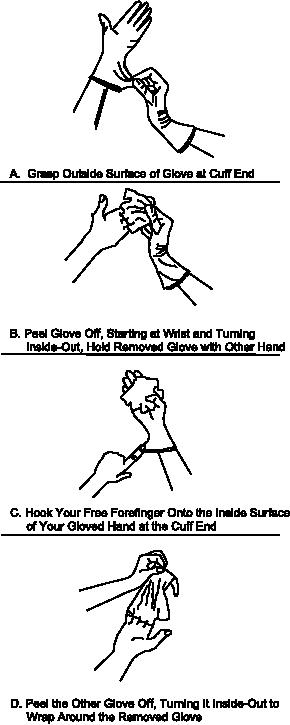
TM 1-1500-204-23-11
worn. Refer to your local safety ofice for additional
requirements on respirator masks.
c. Clothing. Protective clothing may be cover-
alls or lab coats; they may be either disposable or
launderable. Long-sleeved and long-legged clothing
should be worn to minimize skin contact. Openings
should be taped closed with masking tape. When
dealing with liquid chemicals, a rubber coated apron,
A-A-55063, should be worn. Only clean garments
should be used during layup and bonding operations.
d. Eye Protection. Goggles shall be worn when
performing damage removal, machining and drilling
of advanced composite materials unless a full face
respirator is used. Chemical splash goggles and/or
face shields shall be worn when working with liquid
adhesives, paste adhesives and solvents. Safety
glasses shall be worn with face shields.
2-6. MATERIAL HANDLING.
This paragraph
describes physical and chemical processes which
may cause injury or death to personnel or damage
to equipment if not properly followed. This safety
summary includes general safety precautions and
instructions that must be understood and applied
during operation and maintenance to ensure per-
sonnel safety and protection of equipment. Prior to
performing any task, the WARNINGs, CAUTIONs,
and NOTEs included in that task shall be reviewed
and understood. Always ensure all safety precautions
are followed as per the applicable system speciic
technical manual.
a. Safety. The following safety precautions must
be strictly observed while repairing advanced com-
posite structures.
(1) Damaged composite components should be
handled with care. Single ibers can easily
penetrate the skin, break off, and become
splinters lodged in the skin. Sharp tweez-
ers and a magniication lens are generally
required to remove the splinter. If the splin-
ter is hard to remove, seek medical attention
immediately.
Figure 2-2. Removing Disposable Gloves
(2) Respiratory protection is usually required
for all operations where dust is present or
b. Respirator Masks. Respiratory protection is
generated. All dust generating tools should
provided against dusts and ibers by wearing a res-
utilize vacuum attachments to capture dust
pirator equipped with a HEPA ilter. The respirator
where practical. Refer to your local safety
will also require chemical cartridges (suitable organic
ofice for speciic respiratory protection
vapor type) if protection is needed against chemi-
requirements. Additional guidance can be
cal vapors or gases. A half mask is the minimum
found in AR 385-10, Army Safety Program,
recommended. Only NIOSH/MSHA (National Institute
and AR 11-34, Army Respiratory Protection
of Occupational Safety and Health/Mine Safety and
Program.
Health Administration) approved respirators shall be

